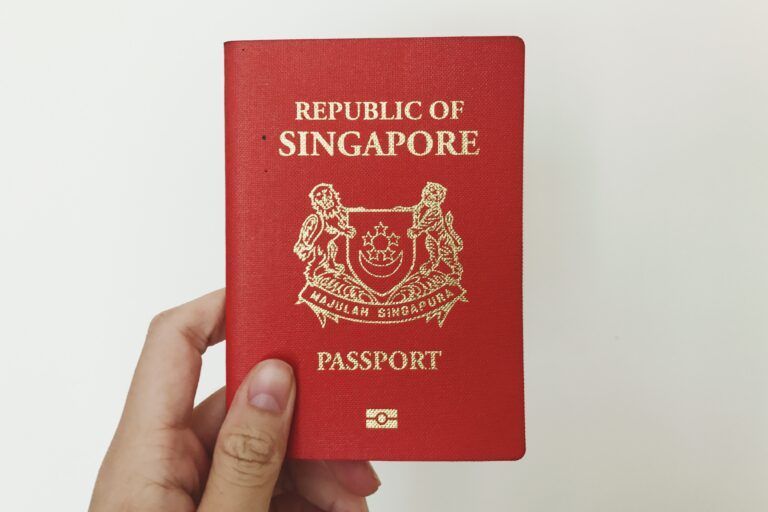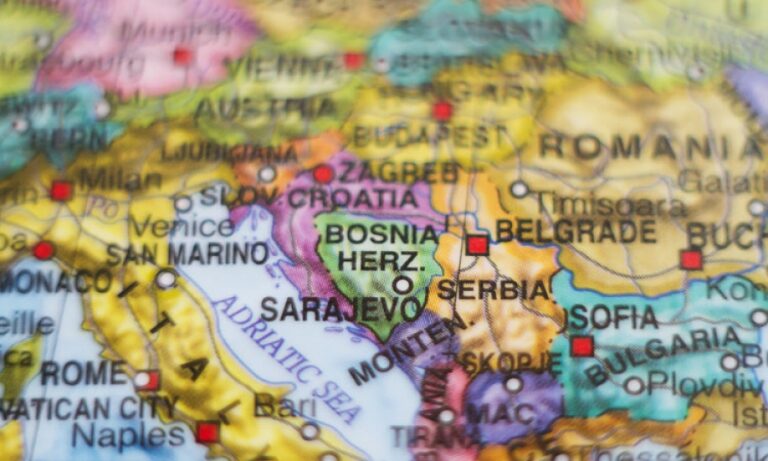No More Travel Confusion: Essential Tourist Dictionary Definitions
Understanding Tourism Behavior
Elements of Tourist Behavior
Tourism consumer behavior encompasses several important aspects, including travel motivation, decision-making, choice preference, destination image, and satisfaction. According to the American Marketing Association, consumer behavior is defined as “the dynamic interaction process among emotional, cognitive, behavioral, and environmental factors” (NCBI).
To better comprehend the various elements involved in tourist behavior, consider the following key factors:
-
Travel Motivation: What drives you to travel? Whether it’s the allure of a new culture, adventure, relaxation, or social interaction, understanding your motivation helps in planning memorable trips.
-
Decision-Making Process: This involves how you choose destinations, activities, accommodations, and other travel-related decisions. The process is influenced by information sources, personal preferences, and past experiences.
-
Choice Preferences: Preferences for certain types of destinations, accommodations, and activities play a critical role in shaping your travel experiences.
-
Destination Image: How you perceive a destination based on its marketing campaigns, reviews, and your personal interests affects your choice of travel location.
-
Satisfaction Levels: Your overall satisfaction with a trip is based on how well the experience met or exceeded your expectations. Satisfaction is often influenced by the quality of services, attractions, safety, and cultural experiences.
By recognizing and evaluating these factors, you can gain deeper insights into your travel behavior and make more informed travel decisions. For more specialized terminology related to tourism, visit our tourist glossary terms.
Decision-Making Patterns
Understanding the decision-making patterns of tourists can significantly enhance your travel experiences. The study on tourism consumer behavior analyzed multiple facets of decision-making and found that tourists primarily obtain information from online sources. These include travel notes, strategies, and reviews on websites like Ctrip, along with official websites or apps of tourist spots and search engines like Baidu, Taobao, and Dianping (NCBI).
Here are some key patterns in tourist decision-making:
-
Information Channels: Most tourists rely heavily on the internet for travel planning. Popular platforms for gathering information include travel blogs, review sites, social media, and search engines.
-
Step-by-Step Planning: The planning process usually starts with selecting a destination, followed by researching accommodations, activities, and travel routes. This is often coordinated through digital tools and apps.
-
Review Dependence: User reviews and ratings play a crucial role in decision-making. Positive reviews can significantly sway your choices, while negative feedback can deter you from certain options.
-
Cost vs. Quality: Balancing cost and quality is a recurring theme. Tourists often compare prices and offerings to find the best value for their budget, taking advantage of deals and discounts.
-
Social Influence: Recommendations from friends, family, and online communities often influence travel decisions. Personal endorsements carry significant weight in the decision-making process.
Understanding these patterns can help you navigate the vast amount of information available and make well-informed travel choices. For more on specific travel terminologies and definitions, dive into our travel glossary section.
| Decision-Making Factors | Description |
|---|---|
| Information Channels | Internet, travel blogs, review sites, social media |
| Step-by-Step Planning | Destination selection, researching activities, and routes |
| Review Dependence | Influence of user reviews and ratings |
| Cost vs. Quality | Balancing budget with value |
| Social Influence | Recommendations from friends, family, and online communities |
For additional insights, explore our pages on scuba diving terms, cruise ship jargon, and ride-sharing expressions.
Tourist Perception and Satisfaction
Understanding how you perceive and evaluate your travel experiences is key to identifying the best trips and maximizing satisfaction. This section explores the essential channels used for gathering tourist information and the criteria used for evaluating destinations.
Tourist Information Channels
Tourist information channels are principal resources that guide your decision-making process when selecting a travel destination. For many travelers, the internet serves as the dominant platform for gathering data. You rely on travel notes, strategies, and reviews on various travel websites and applications. Popular sources include platforms like Ctrip, official tourism websites, and search engines such as Baidu, Taobao, and Dianping (NCBI).
Here’s a table summarizing the primary tourist information channels:
| Information Channel | Description |
|---|---|
| Travel Websites | Reviews and strategies on sites like Ctrip |
| Official Websites | Information from destination official sites |
| Search Engines | Search platforms like Baidu, Taobao, and Dianping |
| Apps | Mobile applications from scenic spots or travel brands |
These resources play a crucial role in shaping your perception of tourism destinations and helping you make informed decisions. To delve deeper into tourism vocabulary, explore our tourist glossary terms.
Destination Evaluation Criteria
When evaluating a travel destination, several criteria come into play. Tourists typically assess destinations based on a combination of natural resources, culinary offerings, climate, and social environment. The perception of these cognitive images can significantly impact your travel satisfaction levels.
A study on tourist perception found that positive feedback often centers on natural scenery, special food, and favorable conditions (NCBI).
Key evaluation criteria include:
- Natural Tourism Resources: Beautiful landscapes and unique geographical features.
- Special Catering: Local cuisine and culinary experiences.
- Climate Environment: Weather conditions and their suitability for various activities.
- Social Environment: Cultural aspects and the friendliness of the local population.
Here’s a table summarizing these evaluation criteria and common positive expressions:
| Evaluation Criteria | Common Positive Expressions |
|---|---|
| Natural Tourism Resources | “Beautiful,” “Worthy” |
| Special Catering | “Good,” “Delicious” |
| Climate Environment | “Comfortable,” “Pleasant” |
| Social Environment | “Friendly,” “Welcoming” |
By understanding these evaluation aspects, you can better appreciate what contributes to a satisfying travel experience. Explore more terms related to travel by visiting our sightseeing vocabulary list and enhance your travel knowledge.
For further guidance on essential travel terms, don’t miss our essential tourist expressions to navigate your next adventure with ease.
The Definition of a Tourist
Defining the term “tourist” has been a subject of much debate. Understanding this definition is crucial for grasping the full spectrum of tourism behavior.
Evolution of Tourism Definitions
The concept of a tourist has evolved over time. According to Smith (1995, p. 20), there is no universally accepted operational definition of the words “tourist” or “tourism,” despite both terms having been part of the lexicon since the early 1800s. This lack of consensus underscores the complexity and multi-faceted nature of tourism.
Historically, definitions have varied depending on the context and the perspective of the definer. In general, a tourist is often seen as someone who travels away from their usual environment for leisure, business, or other purposes. Early definitions focused primarily on leisure trips, but modern understandings have broadened to include business travel and other motives.
For more detailed explorations of tourist terminology, you may find our vacation glossary guide or tourism industry terms helpful.
Statistical Classification of Tourists
For statistical and analytical purposes, it’s important to have a clear and precise definition of a tourist. The World Tourism Organization (WTO) provides a functional classification. Specifically, they define a tourist as:
- A visitor whose visit is for at least one night.
- Main purposes include:
- Leisure and holidays
- Business and professional trips
- Other tourism purposes such as health, religion, and education.
This classification helps in gathering accurate data and understanding tourism patterns. Below is a table summarizing the main purposes:
| Purpose of Visit | Examples |
|---|---|
| Leisure and Holidays | Vacation, sightseeing |
| Business and Professional | Conferences, meetings |
| Other Tourism Purposes | Medical tourism, pilgrimages, educational trips |
For more on tourism classification and related terms, you can refer to our articles on common tourist jargon and tourist language basics.
By understanding these definitions and classifications, you can better navigate the diverse world of tourism and gain insights into the various aspects that influence travel behavior. If you’re looking to delve deeper into specific travel terminology, check out our comprehensive tourist glossary terms.
Economic Impact of Tourism
The economic impact of tourism is substantial, affecting both global and domestic markets. Here, you will gain a better understanding of global tourism receipts and the differences between domestic and international tourism.
Global Tourism Receipts
Global tourism receipts refer to the total expenditure by international tourists on accommodation, food, entertainment, and other travel-related activities. In 2014, global tourism receipts totaled US$1133 billion (€985 billion), highlighting the significant economic contribution of the tourism sector (Springer). To put this in perspective, total world merchandise exports for the same year were around US$19,064 billion, while total world commercial services exports were US$4974 billion.
| Year | Global Tourism Receipts (US$) | World Merchandise Exports (US$) | World Commercial Services Exports (US$) |
|---|---|---|---|
| 2014 | 1133 billion | 19,064 billion | 4974 billion |
The considerable revenue generated by tourism underscores its importance to the global economy. For more information about how tourism affects the economy, check out our section on tourism industry terms.
Domestic vs. International Tourism
When discussing tourism, it’s important to differentiate between domestic and international tourism. Domestic tourism involves residents traveling within their own country, while international tourism involves global travelers visiting foreign countries.
In regions like Europe and North America, more than 80% of tourism is domestic. This high percentage reflects the tendency of residents to explore their local regions rather than venturing abroad. Conversely, in the Pacific or Asia regions, the domestic component tends to be much lower (Springer).
| Region | Percentage of Domestic Tourism |
|---|---|
| Europe | > 80% |
| North America | > 80% |
| Pacific | Much Lower |
| Asia | Much Lower |
Understanding these differences can help you better navigate the tourist glossary terms and interpret various common tourist jargon. Engaging in domestic tourism can be both enriching and beneficial for the economy, offering a different yet valuable travel experience when compared to international tourism. For more insights into travel-related terminology, visit our page on essential tourist expressions.


